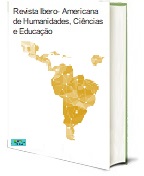RETRATAMENTO ENDODÔNTICO: REVISÃO DE LITERATURA
DOI:
https://doi.org/10.51891/rease.v8i5.5583Palavras-chave:
Retratamento. Endodontia. Infecção Dentária. Insucesso.Resumo
O tratamento endodôntico para obter sucesso requer cuidados e técnicas minuciosas, sendo estes o estabelecimento do correto diagnóstico, manutenção da cadeia asséptica, um correto preparo químico mecânico dos canais radiculares. Segundo a literatura as principais indicações para o retratamento seriam quando não há regressão da radiolucidez periapical em período superior a dois anos ou quando há sinais e sintomas inferiores a este período. O objetivo desse trabalho é apresentar através de uma revisão da literatura as principais causas de insucesso no tratamento endodôntico, técnicas de retratamento e índices de sucesso após o retratamento endodôntico. A literatura relata que de 30% a 50% dos insucessos na terapia endodôntica estão relacionados a infecções emergentes, recorrentes e persistentes. Quando o tratamento endodôntico não tem sucesso é feito o retratamento no canal radicular, visando retirar as bactérias e infecções persistentes que se encontravam presentes. Ao se constatar um insucesso endodôntico deve ser considerada a opção de um retratamento do canal radicular, sendo que quando bem indicado há grande chances de obter êxito. Portanto pode-se concluir nestas situaçoes que a correta intervenção das manobras preconizadas nos estudos apresentados pode promover sucesso no retratamento.
Downloads
Downloads
Publicado
Como Citar
Edição
Seção
Categorias
Licença
Atribuição CC BY

